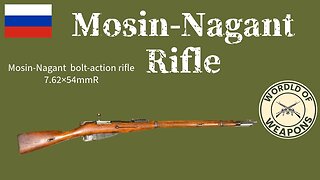Premium Only Content

HAL Tejas 🇮🇳 The India's quest for air superiority
HAL Tejas Multirole light fighter
1.Overview 00:00
2.Airframe 02:36
3.Avionics 03:25
4.Flight control system 06:43
5.Propulsion 08:26
The Tejas is a single-engine multirole combat aircraft which has a tailless, compound delta wing design with "relaxed static stability" for enhanced manoeuvrability and agility. The Tejas is a multi-role combat aircraft and its flexibility permits it to carry out Interception, air-to-surface and anti-shipping roles in a single mission. The wind tunnel testing and computational fluid dynamics analysis have optimised the design of Tejas for minimum transonic and supersonic wave drag, as well low wing-loading.
It was designed by the Aeronautical Development Agency (ADA) in collaboration with Aircraft Research and Design Centre (ARDC) of Hindustan Aeronautics Limited (HAL) for the Indian Air Force and Indian Navy. There are three production models of the Tejas - the mark 1, mark 1A and a trainer version. The Tejas Mark 2 is expected to be ready for series production by 2026.
Tejas has eight hardpoints – one beneath the port-side air-intake, one under the fuselage (centreline station) and three hardpoints under each wing, of these, three are wet hardpoints which can carry drop tanks. The hardpoint beneath the port side air-intake is dedicated to carrying sensor pods such as FLIR, IRST or laser rangefinder/designator. These can also be carried on the centreline pylon and inboard pairs of wing stations. The Mark 1A has an aerial refuelling probe on the starboard side of the forward fuselage. The Tejas weapon suite consists of I-Derby ER and Astra beyond visual range air-to-air missiles and R-73, Python-5 and ASRAAM close combat missiles. The Tejas has an internal 23 mm Gryazev-Shipunov GSh-23 twin-barreled autocannon under the starboard side air-intake. The BrahMos-NG supersonic cruise missile is being developed for the Tejas.
The relatively smaller size, extensive use of airframe composites, the Y-duct inlet which shields the engine compressor blades, the application of radar-absorbent material (RAM) coatings and so on, reduces the overall radar cross-section of the aircraft.
Avionics
The avionics of the Tejas Mark 1 is centered around Elta EL/M-2032 radar. Its digital flight control computer developed by ADE and manufactured BEL. It has an electronic warfare (EW) suite domestically developed by Defence Avionics Research Establishment (DARE), which consists of a radar warning receiver (RWR), integrated self-protection jammer, chaff and flare dispenser system. The upgraded variant of the Tejas Mark 1, named the Tejas Mark 1A, will have an AESA radar, new digital flight control computer, new EW suite and updated avionics. Some of the production Mark 1A fighters will be equipped with the Elta EL/M-2052 AESA radar, while rest are expected to fly with the domestically developed Uttam AESA radar. The new EW system for the Mark 1A, developed by DARE and known as the Unified Electronic Warfare suite (UEWS), will have electronic countermeasures and electronic counter-countermeasure capabilities, digital radio frequency memory based jamming and deception capabilities. The Tejas Mark 1A will also carry a pod-mounted self-protection jammer.
The Tejas can also carry pod-based sensors such as forward looking infrared (FLIR). Currently the Tejas is cleared to carry the Rafael Litening III targeting/reconnaissance pod, while an advanced version named Litening 4I will be integrated on the Tejas. The Litening 4I pod enables the aircraft to carry out reconnaissance, surveillance and intelligence gathering, in addition to target acquisition. The Tejas has an integrated health-monitoring system too.
Propulsion
Developing an indigenous jet engine for Tejas was one of the five self-reliance goals identified at the beginning of the LCA Programme. A programme led by the Gas Turbine Research Establishment (GTRE) to design and develop an indigenous powerplant, the Kaveri, was launched as early as in 1986. However Kaveri jet engine development faced some setbacks, hence the General Electric F404-GE-F2J3 afterburning turbofan engine was procured as an interim solution. Since 2004, uprated General Electric F404-GE-IN20 engines are powering Tejas variants.
-
 5:00
5:00
World Of Weapons
1 year agoMosin Nagant Rifle 🇷🇺 A Legend of Military History
107 -
 LIVE
LIVE
Steven Crowder
2 hours ago🔴 FOR CHARLIE KIRK: Breaking Exclusive On Assassin
241,373 watching -
 25:38
25:38
The Rubin Report
1 hour agoRemembering Charlie Kirk & 9/11
44.7K4 -
 LIVE
LIVE
RealAmericasVoice
3 days agoHOME OF REAL NEWS
10,198 watching -
 LIVE
LIVE
Benny Johnson
1 hour agoAmerican Martyr: Remembering Charlie Kirk | FBI Reveals New Footage of Assassin, Trump's Eulogy LIVE
8,915 watching -
 1:00:32
1:00:32
VINCE
3 hours agoRest In Peace Charlie Kirk | Episode 123 - 09/11/25
249K154 -
 LIVE
LIVE
LFA TV
6 hours agoLFA TV ALL DAY STREAM - THURSDAY 9/11/25
5,856 watching -
 LIVE
LIVE
Bannons War Room
6 months agoWarRoom Live
15,917 watching -
 LIVE
LIVE
The Shannon Joy Show
1 hour agoA message of encouragement and a call for faith and unity after the tragic killing of Charlie Kirk
129 watching -
 LIVE
LIVE
The Big Mig™
1 hour agoIn Honor Of Charlie Kirk, Rest In Peace 🙏🏻
2,767 watching